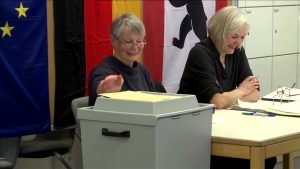The Medici: Godfathers Of The Renaissance — Part 2 of 4 - The Magnificent Medici
This episode details how the Medici family continued to gain power and spent an enormous amount of money financing artists such as painters and sculptors, turning Florence into a cultural factory for the arts; how the family dealt with deadly rivalries including assassinations and assassination attempts; and how a conservative backlash swept Florence where prostitutes and homosexuals were burned at the stake, and with many books and artworks being burned.
Points made in this episode:
— The Medicis were the most powerful family in Florence in 1466, and they were in danger of a coup by rival families, prompting the new head of the family Lorenzo to marry the daughter of a Roman Baron and the niece of a Cardinal which brought connections, class, and military muscle to the Medici family.
— Florence became a cultural factory for the arts, with the Medicis financing most of it.
— Lorenzo took the role of the leader of the family with ease, giving a voice to poor people by offering help to them in exchange for whatever they could afford.
— Lorenzo had a large circle of friends and was a semi-dictator in Florence.
— Lorenzo was raised as a scholar, presiding over the world of art and culture, and he inserted secular freedom into that world which was dominated by the Church.
— The Pazzi family attempted to assassinate Lorenzo and his brother on Easter Sunday 1478 during church services, killing his brother but failing to kill Lorenzo, making Lorenzo a hero and a martyr, and creating a massive web of supporters.
— The current Pope sent troops against Florence, and Lorenzo cut a deal with him that saved the city, leading to Lorenzo being hailed as “The Magnificent.”
— Lorenzo adopted the illegitimate son of his murdered brother and then took control of the city government, making Florence officially now under his control.
— Lorenzo’s word alone was able to make or break the careers of artists, and he patronized such artists as Leonardo Da Vinci and Sandro Botticelli.
— A monk named Savanarola believed Lorenzo was leading the city into vice, and he found an audience for his beliefs, claiming Lorenzo was causing the downfall of Florence.
— Lorenzo’s wife died of Tuberculosis at age 34.
— Lorenzo adopted the sculptor Michelangelo as his own son when the artist was 13, bringing him into his family to grow up with Lorenzo’s children, surrounding him with influential thinkers while he was growing up.
— Lorenzo loosened his grip on the family business by being swept up in the cultural advancements that he brought, which led to many branches of his banks across Europe being forced to close.
— Lorenzo fell seriously ill in 1492, being frightened of damnation and calling his nemesis Savanarola to his deathbed hoping to be absolved, but Savanarola damned him instead, with Lorenzo dying at age 34 fearing hell with his last breath.
— With Lorenzo gone, his nemisis Savanarola seized the chance and took power in an uprising that was sparked by public resentment of Medici wealth and power, beating prostitutes and burning homosexuals at the stake, also burning books, figurines, jewelry and artworks, with the inferno becoming known as “The Bonfire of the Vanities.”
Article Tree
| A Summary of the History of the World, in Videos |
| THE EUROPEAN RENAISSANCE PERIOD (1300 AD — 1700 AD) |
| “The Medici: Godfathers of the Renaissance” (documentary series) |
| Video: The Medici: Godfathers Of The Renaissance — Part 2 of 4 - The Magnificent Medici |



